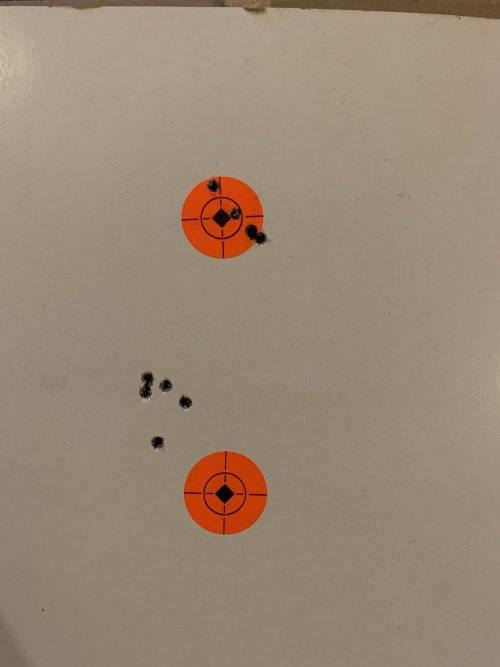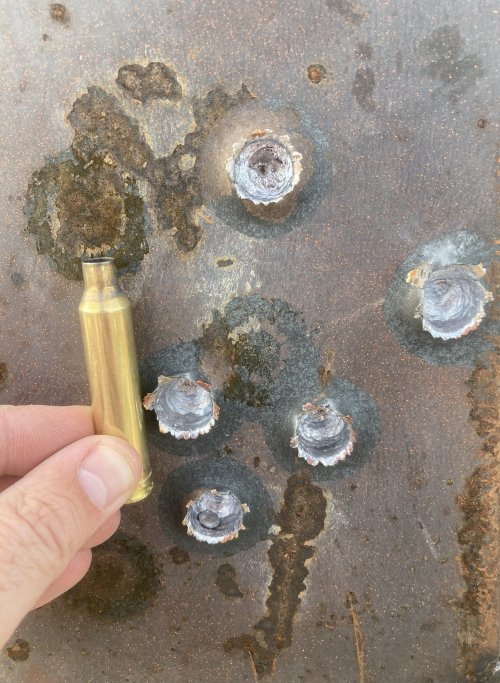CPAjeff
Well-known member
Quick question, have any of you experienced a tighter group at 200 yards than at 100 yards with the same load?
Yesterday I hit the range to test some new loads. I shot groups at 100 and 200, fresh new targets for each group, solid rest, etc. One load was .9" at 100 center to center, and that same load at 200 was .7" center to center. Each shot felt great, and I don't believe there was a flinch/flyer . . . The other loads shot as expected ~ .75" at 100 and near double that at 200.
I loaded another batch last night and will do another round of testing later this week. I'm interested to see what happens!
Yesterday I hit the range to test some new loads. I shot groups at 100 and 200, fresh new targets for each group, solid rest, etc. One load was .9" at 100 center to center, and that same load at 200 was .7" center to center. Each shot felt great, and I don't believe there was a flinch/flyer . . . The other loads shot as expected ~ .75" at 100 and near double that at 200.
I loaded another batch last night and will do another round of testing later this week. I'm interested to see what happens!







